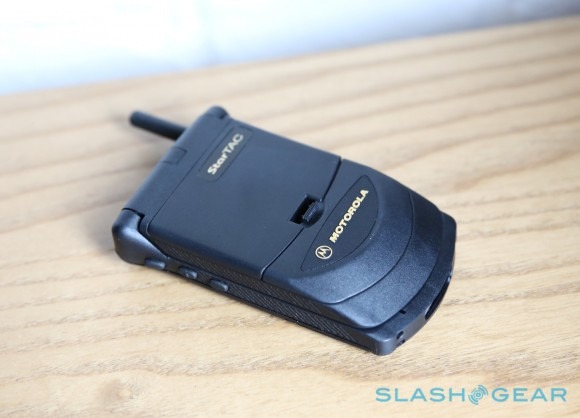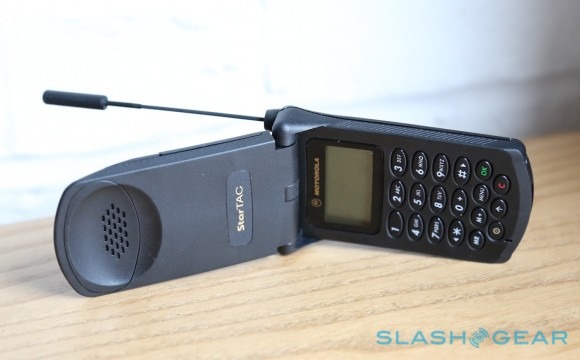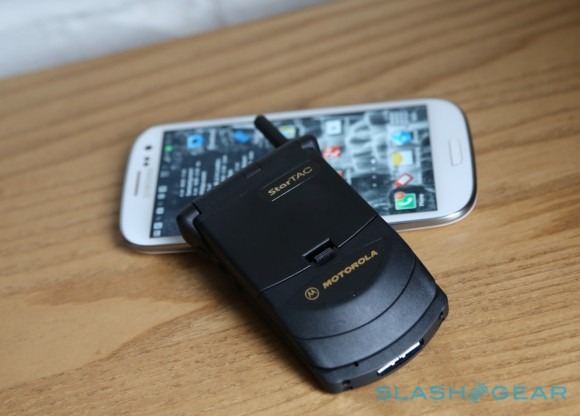A Motorola StarTAC saved me
A StarTAC saved my life. Well, not really. I wasn't accidentally transported to the World War II trenches, and saved from a bullet to the heart by an artfully placed Motorola in my jacket pocket. But the StarTAC – a phone dating back to 1996, and in fact the very first cellphone I owned – gave me a very necessary wake-up call: it showed me just how lucky we are with today's smartphones, with a serving of delicious nostalgia on the side.
Enough of any treat and you'd get inured to its charms. People working in chocolate factories – many a kid's fantasy job – often find the sweet stuff loses its appeal after a while; I guess the same is probably true for pilots, that initial enthusiasm at take-off getting watered down as what once was special gradually becomes routine. I'm sad to say it can be the same with new gadgets.
Don't get me wrong, I still get excited about new technology (and yes, this is the definition of a #FirstWorldProblem, and yes I'm hugely grateful for the job I have), but that tightness-in-the-chest feeling when you're opening something you're truly excited about isn't quite there when you're dealing with review samples. Just as there's really no such thing as an "awful" smartphone today, the proliferation of Android on broadly identical hardware leaves you picking through the minutiae to find whatever differentiators you can. In the process, it's all too easy to forget quite how amazing these computers-that-fit-in-your-pocket really are.

I tried to recapture the lost innocence of the StarTAC, not with my original phone – I accidentally sat on that and snapped it many years ago – but with a slightly newer version. The StarTAC 85 I had as a teenager used a full-sized SIM card, basically accommodating a credit-card scale slice of plastic into a huge slot on the underside, whereas the StarTAC 130 sensibly switched to the miniSIM we're familiar with now (and which has, of course, been supplanted by the microSIM in the iPhone and other handsets, itself soon to be replaced by the nanoSIM) and meant I could take the chip out of my current smartphone and drop it straight in.
[aquote]Forget about a browser, you don't even get a calculator[/aquote]
For a while, a felt sixteen again. Or, if not quite sixteen, then certainly retro in a not-entirely-hipster way. The aged Motorola demands some compromises of its owners; in fact, even cheap feature-phone users will find themselves missing features they previously took for granted. While modern phones are offering pentaband 3G and LTE, the 1998 StarTAC 130 makes do with a single GSM 900 band. Forget about a browser, or even WAP access; you don't even get a calculator. There's a clock, but not an alarm, and you'd better get used to thumbing out SMS messages (MMS? Forget about it) multi-tap style, as T9 predictive text didn't arrive until later. In fact, Motorola avoided T9 in its phones altogether, pushing its own (awful) iTap rival instead.

And yet... there's still something deliciously ridiculous about pulling out an extending antenna when you answer a call. You've not ended an argument with a loved one if you haven't angrily snapped shut a clamshell phone when the vitriol gets too much. The StarTAC's shell may have been skinny when it first launched, but in modern terms it can accommodate an earpiece with some serious lungs on it; similarly, call reception was great (probably irradiating my head nicely in the process).

If using the StarTAC as my primary device convinced me of anything, though, it's that I hardly need a "phone" any more. I use email, sure, and SMS, and mapping, and browsing, and the camera, and Twitter, and Facebook, and Google+, and various other apps, but I actually do as much as possible to avoid speaking to people in real-time. It just feels inefficient and intrusive.
It didn't take long before I returned my SIM to a smartphone and got back online. The warm, tender embrace of HSPA+ never felt so welcoming. Yet none of the excitement about today's new handsets – the Galaxy Nexus, the Galaxy S III, the upcoming iPhone 5 – quite musters the same visceral feel of the nostalgia-fueled anticipation when that StarTAC box arrived on my desk.
